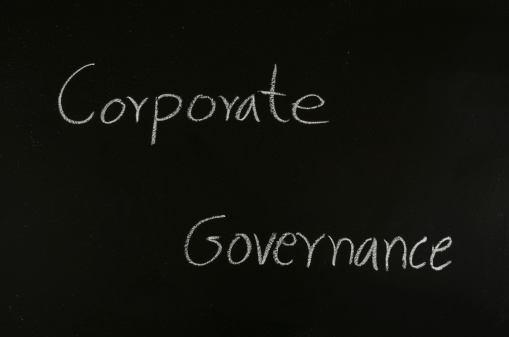The slow but steady return of economic growth for most multinational firms means a welcome shift from retrenchment to expansion. Any expansion in a firm's capacities that increases the number of entities operating within its scope, however, brings potentially increased scrutiny of regulators. This is why firms need to take a look to see whether they're running the most effective and up-to-date governance practices.
Corporate governance is the realm within which rests the style and quality of leadership within each entity and across the organization. Governance is about who has the power to make decisions and who is accountable for them. Best governance practices allow an entity to have appropriate decision-making processes and controls in a way that balances the interests of competing stakeholders while maintaining effective management, clear lines of communication and a good relationship with regulators.
In this post, we provide a quick introduction to the role of the governance department and practices within the emerging science of entity management, paying special attention to how sophisticated technology can leverage best governance practices to help each of your entities and the broader enterprise.
The purpose of having a governance department and/or established best practices for governance, therefore, are twofold: 1) making sure a company achieves its objectives, and 2) keeping shareholders satisfied that their trust in company leadership is well founded. Some of the most common objectives in a sound governance strategy are:
There are three basic tasks when it comes to entity management and governance:
Recent developments in entity management software allow governance processes to be supported directly with automated approval processes, the establishment and maintenance of audit trails, etc. Like other corporate functions, governance increasingly relies on appropriate technological solutions to underpin and support its framework.
An effective platform for entity management is increasingly essential for modern enterprise. Blueprint OneWorld's platform offers a number of secure, elegant and affordable solutions to some of the problems discussed above. Our entity management platform attaches files to different entities and departments, stores them by a unique serial number, and performs check-in and check-out processing, edit-only and read-only rights for various users.
Our platform rests on the ongoing management of three central tasks:
We hope to be your organization's entry point into a reliable and effective strategy of document management. Please call or email us today to discuss these and other solutions.
Corporate governance is the realm within which rests the style and quality of leadership within each entity and across the organization. Governance is about who has the power to make decisions and who is accountable for them. Best governance practices allow an entity to have appropriate decision-making processes and controls in a way that balances the interests of competing stakeholders while maintaining effective management, clear lines of communication and a good relationship with regulators.
In this post, we provide a quick introduction to the role of the governance department and practices within the emerging science of entity management, paying special attention to how sophisticated technology can leverage best governance practices to help each of your entities and the broader enterprise.
The importance of corporate governance and compliance
Governance includes the processes through which a company's objectives are set and pursued in the context of the market and the regulatory environment. Some companies will have a separate division to handle governance alone. Regardless of your organization's size or strategy, the demands of governance are never something you should ignore, so even if you don't have an established governance department, you can have an effective governance strategy in coordination between leadership, legal, compliance and possibly other teams whose functions have bearing on it.The purpose of having a governance department and/or established best practices for governance, therefore, are twofold: 1) making sure a company achieves its objectives, and 2) keeping shareholders satisfied that their trust in company leadership is well founded. Some of the most common objectives in a sound governance strategy are:
- Establishing boards with a wide range of experience, and evaluating their methods;
- Defining roles, responsibilities and accountabilities from the board to the C-suite;
- Practicing and maintaining sound ethical practices and principles;
- Tying compensation of leaders to their performance to create incentives; and
- Making the board responsive to senior management, especially with regard to risk factors.
The role of entity management in governance and compliance
How your organization carries out the basic entity management tasks in its corporate environment has strong implications for your governance strategy. In other words, there's a correlation between the tasks of entity management and corporate governance. Sound governance practice cannot exist in the realm of poor entity management, and vice/versa.There are three basic tasks when it comes to entity management and governance:
- Staying up to date on the responsibilities of your entities and their leadership;
- Advising the leadership on some of the governance matters listed above; and
- Actively maintaining the corporate record for transactions, filings, reports and audits.
Entity management software and corporate governance
To continue with the example of fielding requests on entity leadership and other relevant data, managing thousands of different data points having to do with even the most basic entity information requires a software platform where this information is instantly accessible to the people whose business it is to know it while being secure against data breaches. This means having a platform that is sophisticated enough to, for example, assign permissions for different types of information.Recent developments in entity management software allow governance processes to be supported directly with automated approval processes, the establishment and maintenance of audit trails, etc. Like other corporate functions, governance increasingly relies on appropriate technological solutions to underpin and support its framework.
Facilitate governance and compliance with technology
Software should be both reliable at a standard of excellence and supple enough to adapt to the needs of individual organizations. Institutional change can be tough, but it doesn't have to be. Technological innovation can make a crucial difference as you re-evaluate governance to avoid some new pitfalls and also take advantage of new opportunities. Large organizations are less and less trying to reinvent the wheel, and instead looking for cost-effective solutions to the dilemmas of entity management in an outsourced platform.An effective platform for entity management is increasingly essential for modern enterprise. Blueprint OneWorld's platform offers a number of secure, elegant and affordable solutions to some of the problems discussed above. Our entity management platform attaches files to different entities and departments, stores them by a unique serial number, and performs check-in and check-out processing, edit-only and read-only rights for various users.
Our platform rests on the ongoing management of three central tasks:
- Creating a single, authoritative source of truth for your data ' the vault or repository ' on the Cloud or hosted within internal systems;
- Analyzing data for maximum efficiency, including extraction of qualitative and quantitative data, processes to sort them effectively, as well as present them and thereby make them actionable through visual presentation in charts, graphs and pictures, to make a massive amount of information easily digestible by Boards, the C-suite and corporate secretaries; and
- Performing the ongoing, detailed but necessary tasks in maintaining a sound corporate governance strategy as a central part of your strategy for growth and development.
We hope to be your organization's entry point into a reliable and effective strategy of document management. Please call or email us today to discuss these and other solutions.




